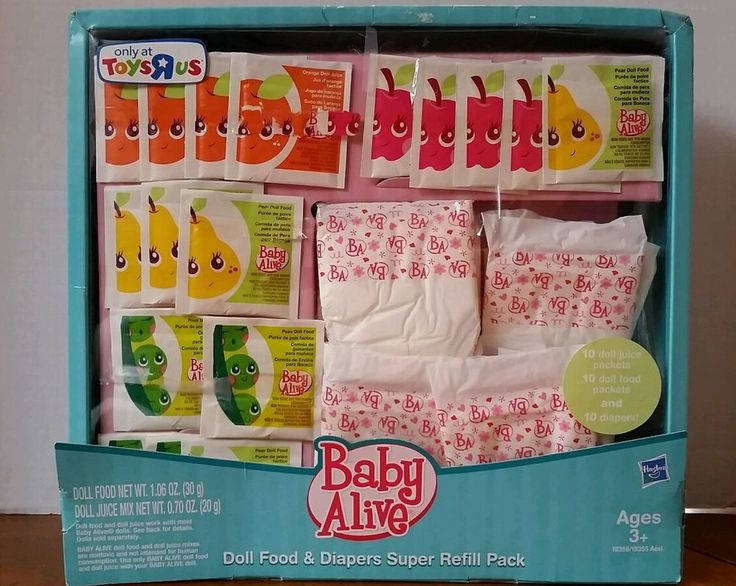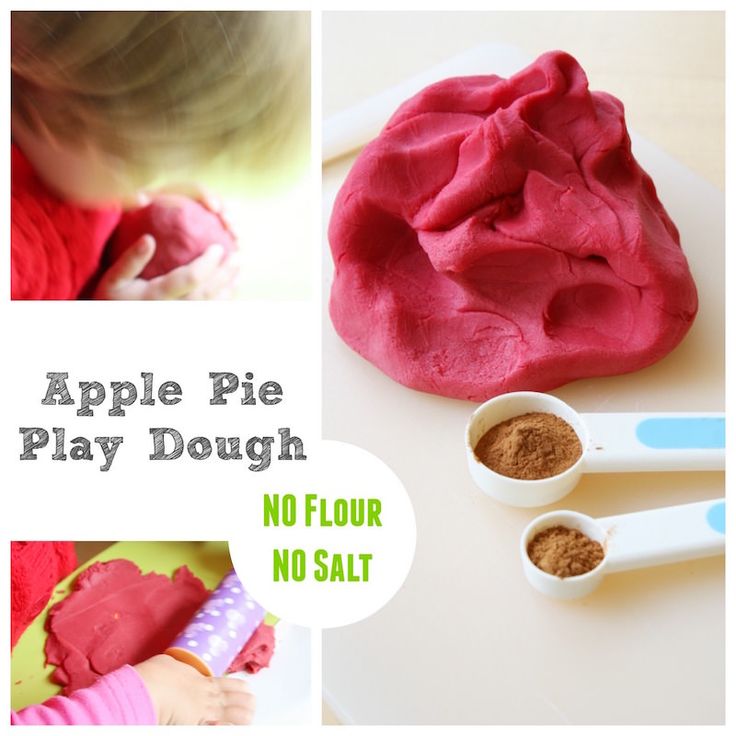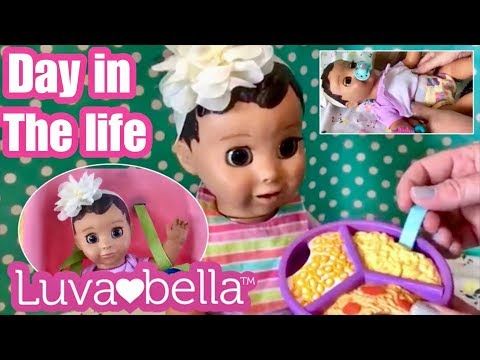How to make baby alive food with cornstarch
How to Make Colorful and Scented Doll Food
I have wanted to make doll food for a while. My daughter goes through this stuff super fast. The store-bought packets are great, but they are a bit expensive and don’t last in our home. We need Costco-size pouches to keep up with our hungry dolls.
My daughter loves dolls more than any toy in our house. The moment she gets a new baby, she gives her a name and cares for her in a super sweet motherly way. It is such a joy to see her play. She plays with all her babies every day, but her favorite ones are the types that she can feed and bathe.
For me, the best doll for this feeding activity is the baby born interactive. This doll holds the liquid! You have to press her belly button to release any fluid. This is an excellent feature for the times your dolls diaper is not on correctly or has no diaper at all. I am not saying this is a mess-free activity, but this toy makes my life easier when it’s time to clean up. So, use any doll that is easy to clean.
Ingredients and Materials
I played around with different ingredients and finally settled on using sugar, baking soda, and cornstarch; these three ingredients give the doll food a puree consistency similar to the store-bought. To take it up a notch and make it more realistic, I decided to use paint and scented oils.
As far as paint goes, I always prefer to use washable paint instead of food gel in my crafts. I want to avoid the small chance of staining anything. We made our first batch with food gels, and the doll food came off the doll’s dress without a problem. Still, I decided to make our second batch with washable paint. I feel more comfortable letting my daughter play with something I know I can easily wash.
I use mason jars in a lot of my projects because they are versatile, but you can store yours in any container you prefer.
Also, although all the ingredients are non-toxic, I am keeping my jars out of reach from my little one.
Doll food
- Place two tablespoons of granulated sugar into a small mason jar.
- Dip the tip of a toothpick into the paint color of your choice. A tiny bit is enough. Then, dip the paint into the granulated sugar and mix until the color completely incorporates, and you don’t see any speckles. Don’t worry if the powder looks white because it will change color when it comes in contact with the water.
- Mix in a few drops of scented oil (If using).
- Add one tablespoon of baking soda and one tablespoon of cornstarch to the sugar and mix.
- Download and print your food labels. Label each jar. If you want different flavor labels, you can download these cute vegetable and fruit clipart from Etsy.
- Finally, mix the doll food with water. I use 1-2 teaspoons per feeding. Add drops of water until you get a puree consistency.
 Don’t worry if you add to much water, your little one and the doll won’t mind. ?
Don’t worry if you add to much water, your little one and the doll won’t mind. ?
This doll food is good to use with baby alive, baby born, or any doll that is designed to eat.
The manufacturers recommend flushing the baby food after each use. So, we feed our dolls a warm bottle of water along with the doll food to wash it out.
I hope you found this helpful. Visit our DIY page for more fun ideas.
Homemade Herbal Baby Powder (talc, cornstarch & arrowroot free)
Baby Powder is one of those quintessential baby supplies, so it didn’t surprise me when I was gifted seven bottles at my baby shower. What did throw me for a loop, though, was when our NICU nurse instructed me not to use it on my baby.
The Dangers
I was new to natural living ideas and had no idea that harmful, or even unfavorable, ingredients might be lurking in baby products at all. But when I found out that talc particles inhaled through the air could cause potential damage to my teeny babe’s lungs, I realized that knowing what was in these products was pretty important.
But when I found out that talc particles inhaled through the air could cause potential damage to my teeny babe’s lungs, I realized that knowing what was in these products was pretty important.
Though there seems to be some debate over whether modern talc is safe in and of itself, reports like this one describe dangers to the bladder and kidneys, nervous system, lungs, and far more when it is inhaled. The American Academy of Pediatrics also advises against the use of baby powder, and they even show a link to Infant Phthalate Exposure here. Not to mention all of the synthetic fragrances involved in my seven bottles of “original” baby powder, which were derived from petro-chemicals (yuck), and are known to cause skin irritation and allergies, among other things.
Is Baby Powder Even Necessary?
My first reaction when I started discovering some of the hazards was to just ditch baby powder altogether. And though I would certainly argue that one could live without it, there were two things that took place which caused me to want to use it again:
- My baby started sleeping through the night.
 Instead of changing her cloth diapers every 2-ish hours as I had been doing in the early days, Clementine’s 8–12 hours night’s sleep left her in the same get-up all night long. And because we used cloth diapers made with organic cotton, the moisture wasn’t whisked away from her skin as much as it might have been with synthetic fibers or SAP-filled disposables. Using a safe powder before putting her down for the night seemed like a good solution to help keep her skin drier. (P.S…. curious about more natural diapering methods? Read about our favorite cloth diapers, and a list of the greenest disposables available.)
Instead of changing her cloth diapers every 2-ish hours as I had been doing in the early days, Clementine’s 8–12 hours night’s sleep left her in the same get-up all night long. And because we used cloth diapers made with organic cotton, the moisture wasn’t whisked away from her skin as much as it might have been with synthetic fibers or SAP-filled disposables. Using a safe powder before putting her down for the night seemed like a good solution to help keep her skin drier. (P.S…. curious about more natural diapering methods? Read about our favorite cloth diapers, and a list of the greenest disposables available.) - She got a killer diaper rash. This was actually due to the method I was using to launder our cloth diapers, and we found the solution and haven’t been bothered with rashes ever since, but it was during that time that I realized the importance of using powder to help keep her irritated skin as dry as possible.
So, I decided to make my own Baby Powder.
Why I don’t use Arrowroot Powder or Cornstarch
Most of the natural recipes I have found online either use cornstarch or arrowroot powder as the prime ingredient, often mixed with a drop or two of essential oils. Though these do work to help keep the skin dry, I wanted something that offered more benefits than that. I wanted a blend that would nourish, and maybe even heal, the skin too.
Not to mention the starches in both arrowroot and cornstarch can actually feed the yeast in a diaper yeast rash. And cornstarch is often full of GMO’s, and comes from a grain so our low/no grain family wouldn’t normally stock it.
I wanted my Homemade Baby Powder to be:
- All natural/organic
- Absorbent (obviously)
- Cloth diaper friendly
- Nourishing to the skin
- Inexpensive (i.e. to use supplies I had on hand)
- Easy to make
It hit me that one of the most commonly used items in my DIY beauty pantry would fit that bill perfectly: bentonite clay. I primarily use this clay for making toothpaste, face masks, and washing my hair, but I knew that it also had a lot to offer my baby’s skin.
I primarily use this clay for making toothpaste, face masks, and washing my hair, but I knew that it also had a lot to offer my baby’s skin.
Option 1: Bentonite Clay on its own
Sodium bentonite clay adsorbs toxins and impurities while leaving behind soothing minerals and nourishment for the skin. It is known to be softening/moisturizing, and to help heal skin irritations. I began using it on its own with great results.
Option 2: Bentonite Clay + Baby-Safe Essential Oils
Then I figured, why not add a few drops of nourishing essential oils? They make everything better, right? So I started mixing a drop or two of lavender oil per 1/2 cup of clay for its soothing and cleansing benefits. Plus, it smelled great! (Tip: need some help finding essential oils that are safe for baby’s skin? I have a free printable chart here.)
Option 3: Ramp it up and make my nourishing recipe!
By now I was already “mixing” and bottling my own baby powder, so I figured that I might as well step it up even more. I added a bit of kaolin clay (white cosmetic clay) which helps with smooth application and spread over the skin, and also is known for being very absorbent and soothing to skin sensitivities and irritations. I also began blending dried herbs into the mix.
I added a bit of kaolin clay (white cosmetic clay) which helps with smooth application and spread over the skin, and also is known for being very absorbent and soothing to skin sensitivities and irritations. I also began blending dried herbs into the mix.
Calendula is a favorite natural remedy ingredient of mine, and I have read that American physicians even used it to treat cuts, scrapes, bruises, and burns, as well as minor infections of the skin as little as 70 years ago. It is also said to possess cleansing properties that help to care for minor wounds. Plantain leaf is also a natural remedy go-to for soothing skin irritations, rashes, and sensitivities.
[pin-embed url=https://www.pinterest.com/pin/188025353171858301/ size=large description=true]
Homemade Herbal Baby Powder
Ingredients:
- 1 tsp Plantain Leaf (dried)
- 1/2 cup Bentonite Clay
- 2–3 tbsp Kaolin Clay
- 2–3 dried Calendula Flowers (or 1–1.
 5 tsp of petals)
5 tsp of petals) - OPTIONAL: 2 drops of Lavender essential oil (And not a drop more! Trust me, this is plenty.)
Method:
Grind the dried herbs together in a coffee grinder, or along with the kaolin clay in a food processor. (I have found that the herbs on their own are not enough substance to grind well in my processor, and the kaolin helps move things along.) Be sure not to add any bentonite clay during this step as it should not come into contact with metal (i.e. the grinder blade), and too much clay in this stage will make a powdery hot mess!
If using a processor, your blend will probably look something like this. Use a flour sifter to remove any leftover pieces.
In a non-metal bowl, using a non-metal spoon, combine ground herbs with both of the clay powders. Stir until well combined. Add essential oils, if using, and stir again.
Transfer to a tightly-sealable, non-metal container and store in a cool, dry place. The product itself should be shelf-stable unless moisture or dirty fingers make their way in.
Usage:
Sprinkle a small amount of powder onto your baby’s skin, gently patting it in to ensure light coverage over all of the diaper area. Our shaker has teeny, tiny holes that prevent powder from creating a cloudy mess, but unless you can find a similar one, I suggest pouring a small amount of the powder first into your hands and then sprinkling with fingers onto your babe to avoid any potential inhalation.
Our family only uses this powder at night time and when skin irritation or rash appears. All ingredients are safe and nourishing for the skin, though, so a light sprinkling could be used as often as each diaper change, if desired.
Have Extra Bentonite Clay Leftover?
I’ve got you covered. Grab this free printable of mine listing several beauty uses (and corresponding recipes) for bentonite clay. P.S.: Accessing this file will also give you the child-safe essential oils chart that I mentioned above.
Have you ever made your own baby powder? What is your favorite recipe?
starch in baby food - 4 answers
Starch
is a complex carbohydrate. In nature, it is synthesized by various plants under the influence of light. In the human body, it eventually turns into glucose, and thus it is absorbed. An excess of starch in the body is indeed undesirable, but with a balanced diet it is easy to avoid.
In nature, it is synthesized by various plants under the influence of light. In the human body, it eventually turns into glucose, and thus it is absorbed. An excess of starch in the body is indeed undesirable, but with a balanced diet it is easy to avoid.
Why is it modified?
Modified starch is a starch with a modified molecular structure. Such changes are made in order to give the substance or enhance it with certain qualities. In baby food, a modification is used that makes starch easily digestible, without complicating the work of the stomach. In any case, starch modification operations have nothing to do with genetic modification. Genetically modified starch can be called, obtained from genetically modified potatoes, corn, rice. The use of such starch is prohibited in Europe. nine0007 Thu o he does in baby food?
Starch can be present in baby food in different forms, but serious manufacturers prefer its most natural "representation": rice or corn starch. They have the most delicate texture and high digestibility. Rice starch makes up approximately 90% of the dry matter of polished grain. It is tasteless and does not affect the taste of other products. Parents who make an intuitively unambiguous and irrevocable decision about the inadmissibility of finding starch even in the smallest quantities in baby purees or canned food usually do not associate with a proven remedy for children's (and not only) diarrhea - rice water. But it owes its fixing properties precisely to the high content of starch. nine0005
They have the most delicate texture and high digestibility. Rice starch makes up approximately 90% of the dry matter of polished grain. It is tasteless and does not affect the taste of other products. Parents who make an intuitively unambiguous and irrevocable decision about the inadmissibility of finding starch even in the smallest quantities in baby purees or canned food usually do not associate with a proven remedy for children's (and not only) diarrhea - rice water. But it owes its fixing properties precisely to the high content of starch. nine0005
But why is starch added to baby fruit or vegetable puree? The answer is simple: to give a smooth and uniform consistency. For example, broccoli cannot be cooked in such a way that the puree does not have a layered structure, that is, a separation into water and the vegetables themselves. Such a consistency is unpleasant for a child. Starch, due to its ability to bind water, eliminates this deficiency.
What's the use?
When following the formulas adopted in baby food, starch cannot be called unnecessary ballast. nine0005
nine0005
First, when broken down in the human body, it turns into glucose.
Secondly, its presence in some types of vegetable and fruit purees, as it were, insures the baby from a too pronounced laxative effect.
Thirdly, due to its properties, starch creates a protective film in the baby's delicate stomach, protecting it from the aggressive effects of organic acids. Many baby food manufacturers go to great lengths to balance the beneficial and aggressive effects of acidic fruits. Typically, this is achieved through the use of non-acidic varieties. And starch in fruit purees performs an additional neutralizing function. nine0007 And how much?
Of course, it is difficult to call healthy and tasty products that characteristically crunch on the teeth. But this has nothing to do with baby food. In the formulation of its best manufacturers, the starch content in various formulations ranges from the required 3-10% . To cope with such a quantity and quality of starch (rice, corn), the baby has enough of its own enzymes contained in saliva and intestines. For example, rice starch grains reach the large intestine, where they serve as an excellent nutrient substrate for bifidobacteria and lactobacilli. nine0007
For example, rice starch grains reach the large intestine, where they serve as an excellent nutrient substrate for bifidobacteria and lactobacilli. nine0007
Starch in baby food - rice, potato, corn
› ›
